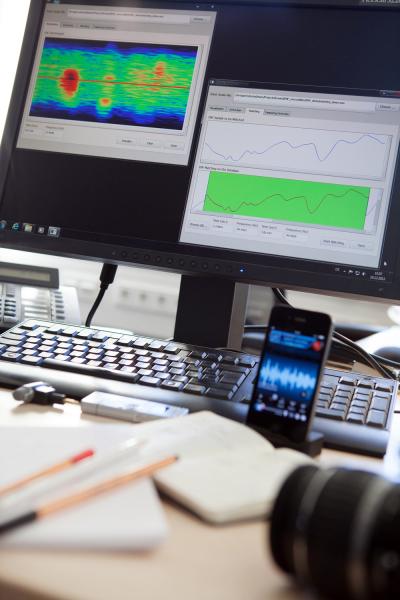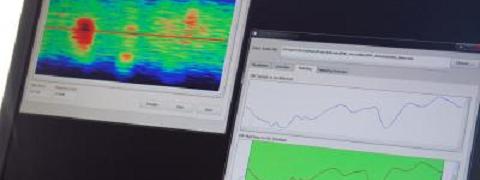[dropcap style=”font-size:100px; color:#992211;”]O[/dropcap]ne more nail in the music writer’s coffin.
Pencil in mouth, finger poised on the rewind button, a nagging memory of a piece of music from back in the day-glo years that sounds just like the one being reviewed. Damn you techie devourers of critical culture – a vague but vast bank of useless pop hooks is ALL WE’VE GOT!
Some techie people invent a machine that can recognise passages of music and trace them to their original.
Wonderful. Inspiring. Revolutionary.
<cough>Shazam?</cough>
As the examiner rewinds once again, one question remains: has the refrain of the song been plagiarized? Eyes narrowed, the music expert presses the start button once more and focuses on the melody and notes with the utmost attention. Finally, no doubt remains: the alleged composer has copied not only the melody but whole chunks of the original song as well.
“Here, this sort of event is greeted by silence,” says Christian Dittmar from the Fraunhofer Institute for Digital Media Technology IDMT in Ilmenau. The software he has developed automatically detects plagiarized music and expunges the stolen parts of the song: “In the most extreme cases, involving particularly brazen theft, there isn’t a single note left in the piece.”
Fraunhofer IDMT’s “PlagiarismAnalyzer” detects identical melodies and samples (whole portions of a song) in a matter of seconds. To do this, mathematical algorithms identify the tonal spectrum of the copy and the original and then compare the two.
Software detects manipulated audio material
Two audio recordings display their characteristic wave shape on the computer screen in front of Patrick Aichroth. An optical signal points to suspect points within the material. Dittmar’s colleague is also on the hunt for manipulated recordings. However, he is not just concerned with music but with audio files in general – including passages of speech recorded on smartphones. He and his team use a variety of techniques to detect manipulation, from electrical network frequency (ENF) analysis to microphone categorization and the inverse decoder.
“Editing processes such as cutting, encoding or decoding leave behind traces in the audio file. These can be detected through an altered ENF, a change in the microphone used or via the inverse decoder,” explains Aichroth. Fraunhofer IDMT developed the inverse decoder on the basis of research findings from the Fraunhofer Institute for Integrated Circuits IIS in Erlangen.
The decoder shows which format and which parameters were used to encode the original file – for instance the mp3 format, which compresses the audio track.
Detectives and Archivists
It’s not just those examining cases of plagiarism that will be able to benefit from the new technologies developed in Ilmenau. Editors, detectives and archivists are sure to find it useful too as the flood of audio content on the internet and within companies continues to rise. 
“These days, you don’t have to be an audio technician to make a recording. Smartphones have become so widespread that audio recordings often exist which might provide substantiating information on important events. As the amount of audio content continues to rise, so too does the danger of manipulation – and there is hardly ever time to check the recording manually,” says Aichroth.
To illustrate his point he cites two situations where automatically checking audio material could prove extremely useful. The first involves an editorial team at a German publication. Just before they are about to go to print, the journalists get hold of some controversial audio material that would put a completely new spin on the title story.
The decisive question is whether the recordings are genuine. Or imagine the following scene: the police possess several mobile phone recordings that heavily implicate the main suspect. Here too the officers need a speedy initial assessment of whether the recordings are genuine or whether they have been manipulated.
Fraunhofer’s scientists in Ilmenau developed their software as part of the EU-sponsored REWIND project. In this project Fraunhofer IDMT is working alongside universities in Brazil, Italy, Spain and the UK. “We want to understand the basic theoretical principles and also to develop technologies from which practical tools evolve. We are bringing together the strengths of all the technology developed to date so that we can offer a quick analysis even for larger volumes of data,” says Dittmar.
It currently takes around 5 seconds to detect a 10-second original sequence within a 30-second piece of music.
Source: Fraunhofer-Gesellschaft
Image: Fraunhofer IDMT

Some of the news that we find inspiring, diverting, wrong or so very right.






















